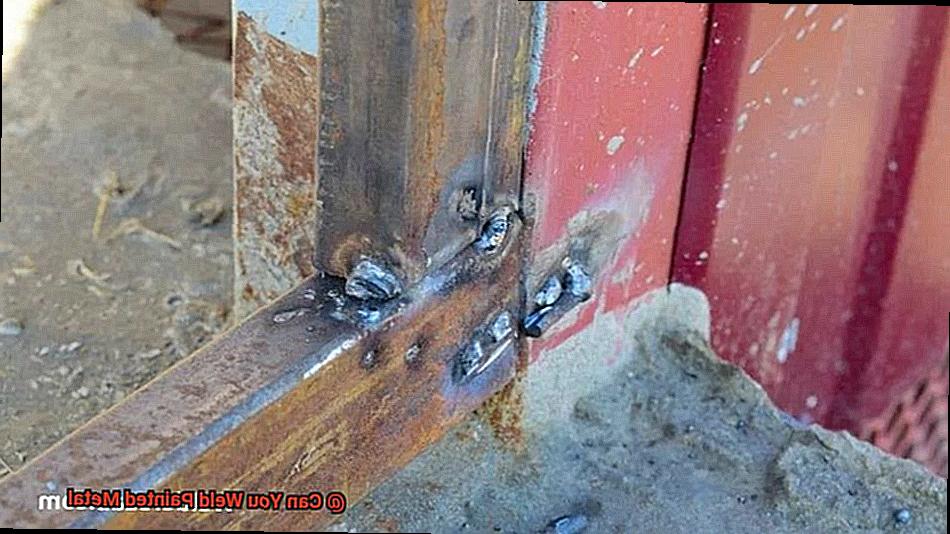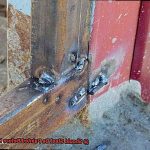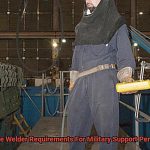Have you ever spent hours prepping a metal surface for painting, only to realize that you need to weld it?
It’s a frustrating dilemma that many DIY enthusiasts and professional welders face. But can you weld painted metal?
Welding painted metal is no walk in the park. If not done correctly, it can lead to a substandard weld, ruining your project entirely.
In this blog post, we’ll tackle this age-old question and provide you with all the information you need to weld painted metal with confidence. We’ll delve into the technical aspects of welding painted metal and explore the challenges that come with it.
We’ll also discuss the different welding options available and provide some helpful tips and tricks to help you achieve the perfect weld on painted metal. Whether you’re a beginner or an experienced welder, understanding the ins and outs of welding painted metal is crucial.
We’ll give you insight into the advantages and disadvantages of welding painted metal so that you can make an informed decision about the best approach for your project. Welding painted metal may not be easy, but with the right tools and techniques, it can be done correctly, ensuring your project is a success.
So, let’s dive into the world of welding painted metal and see what’s possible.
What is Welding?
Contents
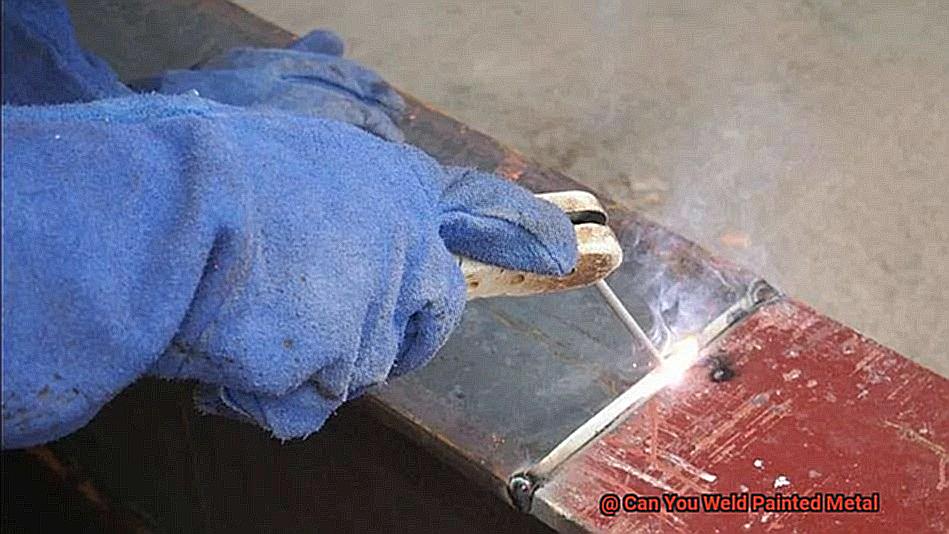
Welding is a fascinating and essential process that has transformed the manufacturing industry.
It involves the joining of two or more metal pieces using a filler material, resulting in strong and durable structures. Welding is widely used in various industries such as construction, automotive, and manufacturing.
There are several types of welding processes available to choose from, each with its own set of advantages and disadvantages. MIG welding is commonly used in automotive repair, while TIG welding is ideal for precision work.
Stick welding is a versatile method that can be used on a variety of metals, and FCAW is perfect for outdoor applications. However, welding comes with its own set of risks.
Welders are exposed to dangerous fumes, intense heat, and electric shocks. Therefore, proper safety precautions must be taken while welding.
Welders must wear protective clothing, gloves, and helmets to minimize the risks associated with welding. It’s worth noting that welding painted metal can be challenging due to potential safety hazards and issues that can arise during the welding process.
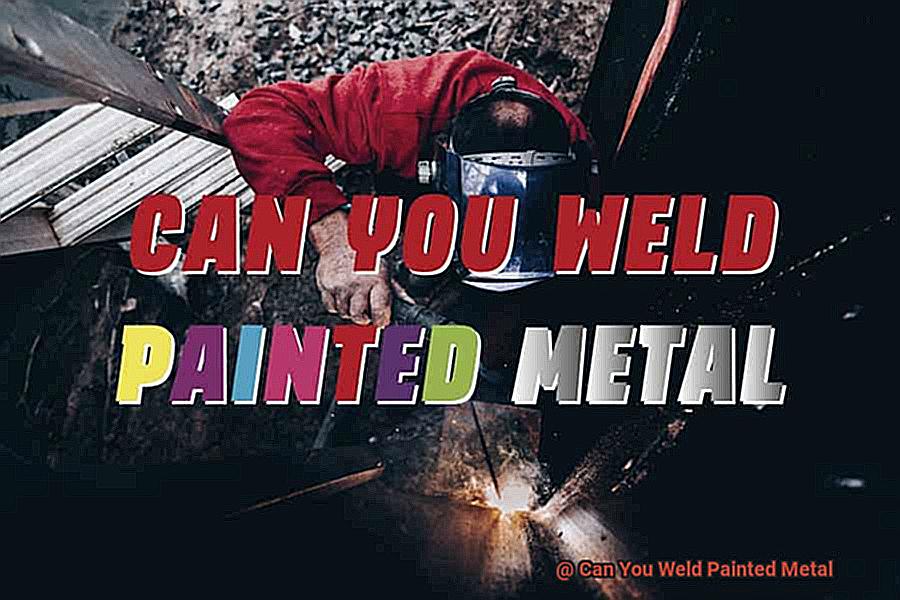
It is not recommended unless necessary. If you must weld painted metal, be sure to take extra precautions and follow proper safety procedures.
Consulting with a professional welder who has experience with welding painted metal can also ensure that your project is completed safely and effectively.
So, welding is an essential process used in various industries to create strong and durable metal structures.
Why Is Welding Painted Metal Not Recommended?
If you’re planning on welding painted metal, it’s important to know that it’s generally not recommended.
This is because welding produces a lot of heat, which can cause the paint to burn and release harmful fumes. These fumes are not only unpleasant but also extremely hazardous to your health, causing respiratory problems, headaches, dizziness, and even unconsciousness.
Moreover, welding painted metal can lead to structural issues. The paint can melt and mix with the weld, creating a weak and brittle joint that can compromise the integrity of the metal and cause it to fail under stress.
The adhesion of the weld is also affected by the paint, preventing it from properly bonding with the metal and leading to cracks and other defects in the finished product. Therefore, it’s crucial to remove any paint or coating before welding in order to ensure a strong and safe weld.
Although it may seem like a time-saver or cost-effective option to weld painted metal, it’s not worth putting your health and safety at risk.
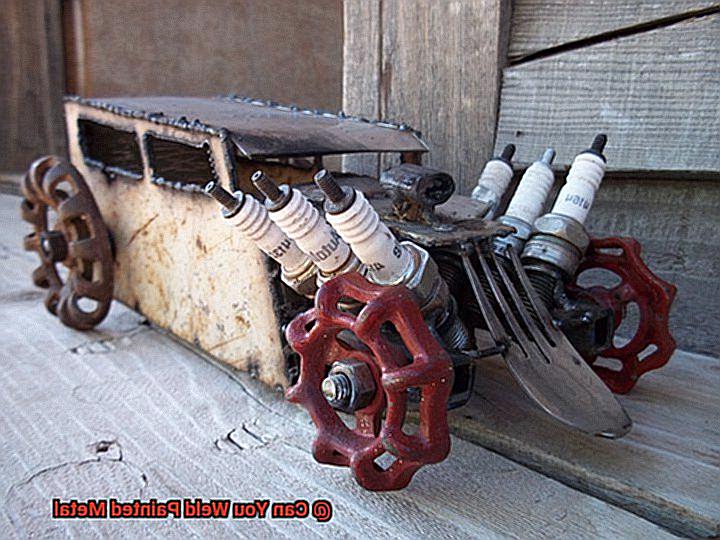
If you’re unsure about whether your project requires welding on painted metal, consult with a professional welder who has experience in this area.
They will be able to advise you on the best course of action to take to ensure your project is completed safely and effectively.
What Are the Hazards of Welding Painted Metal?
Not only can toxic fumes be released during the welding process, but the potential for fire or explosion is also a significant concern.
One of the most obvious hazards of welding painted metal is the release of toxic fumes. Painted metal often contains chemicals such as lead, cadmium, chromium, and zinc.
When these chemicals are heated up during welding, they can release fumes that are harmful to human health. These fumes can cause respiratory issues, headaches, dizziness, nausea, and long-term damage to the kidneys, lungs, and other organs.
Another significant hazard associated with welding painted metal is the risk of fire or explosion. Paints and coatings can be highly flammable and ignite when exposed to high temperatures from welding.
This risk is especially high when working with metal that has been painted with oil-based paints or other highly flammable coatings. To mitigate these hazards, it’s essential that welders take proper precautions when working with painted metal.
This includes wearing protective gear such as respirators and gloves to minimize exposure to toxic fumes. Proper ventilation in the workspace is also crucial to reduce fume exposure.
Using non-flammable coatings whenever possible can help mitigate the risk of fire or explosion. Additionally, it’s vital to ensure that all paint and coating residues are removed from the surface of the metal before welding to minimize the risk of fire or explosion.
How to Prepare for Safely Welding Painted Metal?
Then it’s crucial to prepare the surface adequately and follow safety precautions. Here are five steps to prepare for safely welding painted metal.
Step 1: Remove the Paint
The first step in preparing painted metal for welding is to remove the paint. Paint can release toxic fumes when heated, so it’s essential to remove all of the paint from the area you will be welding.
You can use sandpaper or a wire brush for small areas, but if there is a large amount of paint on the metal, it may be necessary to use a chemical stripper.
Always wear protective gear like gloves and a respirator mask while removing paint.
Step 2: Clean the Surface
After removing the paint, clean the metal thoroughly using a degreaser or solvent.
Any residual chemicals or debris left on the metal can cause problems during the welding process, such as porosity or poor weld quality. Ensure that the surface is dry before proceeding with welding.
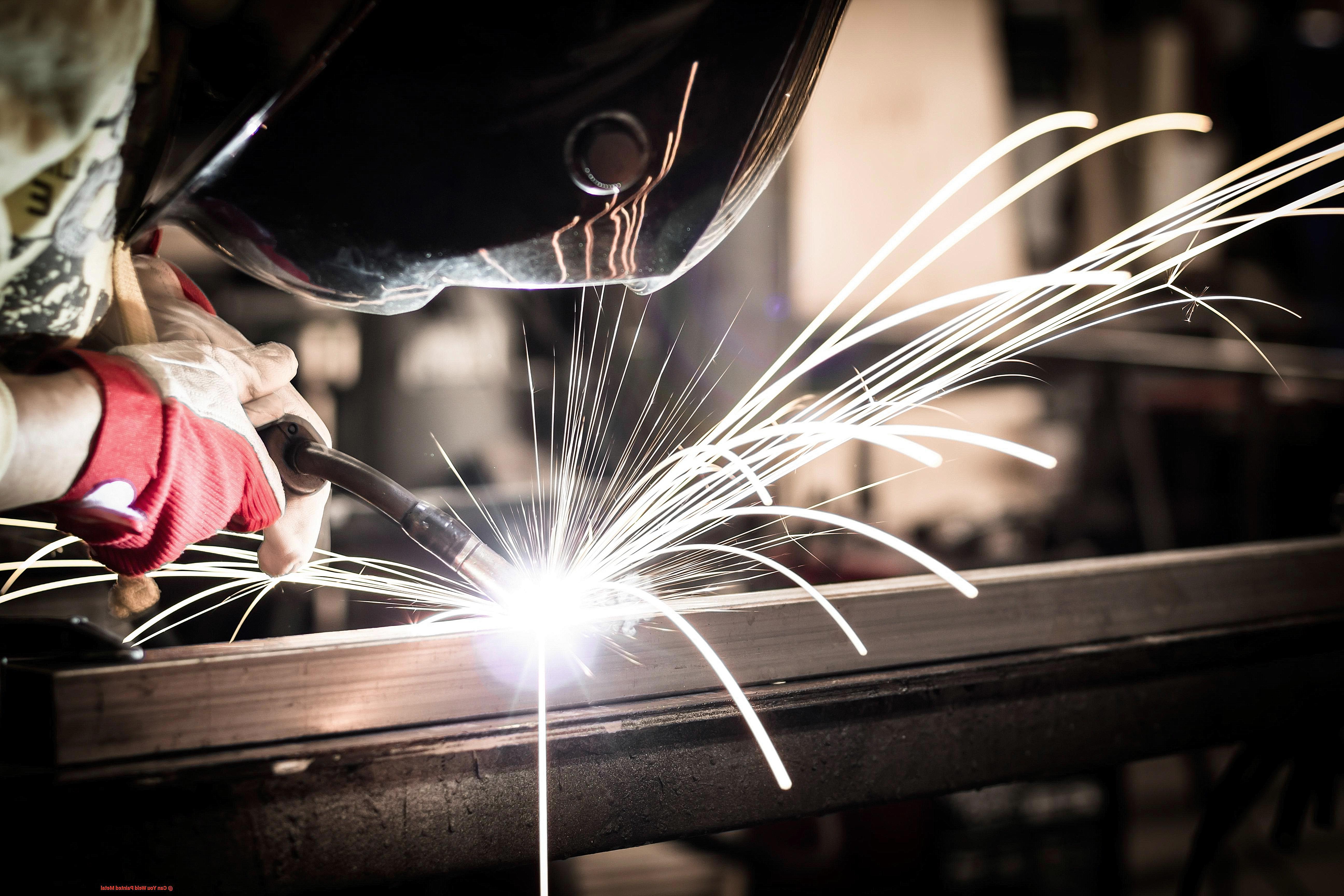
Step 3: Roughen Up the Surface
A clean, rough surface will allow for better penetration and reduce the risk of porosity in the weld. Lightly sanding the surface can help roughen it up and promote adhesion.
Step 4: Choose the Right Welding Method and Materials
It’s essential to choose the appropriate welding method and materials for your job.
MIG welding may be more suitable for thinner metal with less paint, while TIG welding may be better for thicker metal with more paint. It’s also important to use the correct filler material for the base metal being welded.
Step 5: Protect Yourself
Welding painted metal can release hazardous fumes, so it’s crucial to protect yourself during the welding process.
Wear gloves, a respirator, and other protective gear as needed.
Additionally, ensure that there is proper ventilation in the area where you will be welding.
By following these five steps, you can safely weld painted metal without compromising your health or the quality of your welds.
aCY_d_uUGwU” >
What Is Stitch Welding and How Does It Work?
This innovative technique involves creating small welds, or “stitches,” along the length of a joint instead of one continuous weld. By doing this, welders can avoid damaging paint while still creating a strong joint.
The process is straightforward: start at one end of the joint and make a small 1-inch weld. Then, move down the joint and make another small weld, slightly overlapping the previous one.
Repeat until the entire joint is complete. One of the advantages of stitch welding is how quickly it can be done.
The smaller welds mean less time spent welding, and because heat input is lower, there’s less risk of warping or distorting the metal. But it’s important to recognize that stitch welding does have limitations.
Also Read: Can You Weld Titanium to Steel? – The Welding Guru
Conclusion
In conclusion, welding painted metal can be a tricky and risky process that requires extra precautions.
The heat generated during welding can cause paint to burn and release harmful fumes, posing a significant threat to human health. Moreover, the paint’s adhesion can affect the weld’s integrity, leading to cracks and other defects in the final product.
However, if you must weld painted metal, don’t fret. With proper safety measures in place, you can minimize the risks.
Make sure to remove all paint or coating from the surface before welding and wear protective gear such as gloves and respirators. Choosing the appropriate welding method and materials for your job is also crucial.
One innovative technique that you might consider is stitch welding. This approach involves creating small welds along the length of a joint instead of one continuous weld.
Stitch welding helps avoid damaging paint while still creating a robust joint. In summary, always consult with an experienced professional welder if you’re unsure whether your project requires welding on painted metal.
